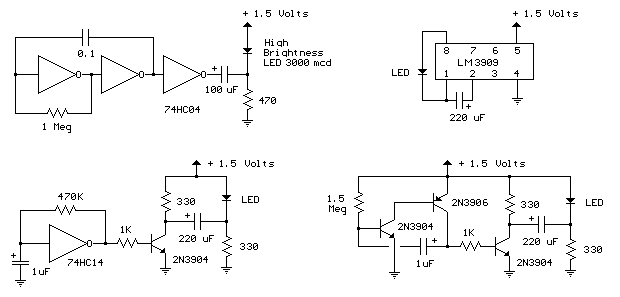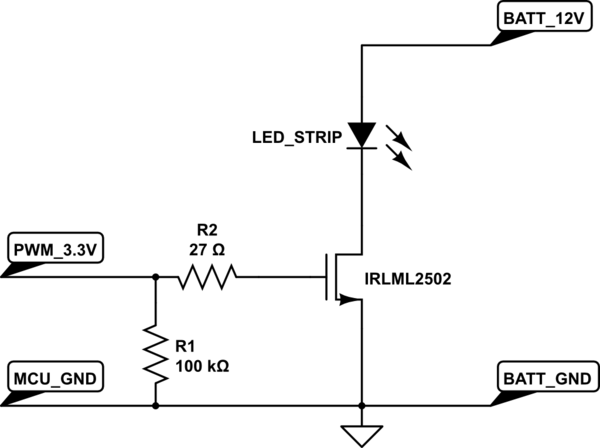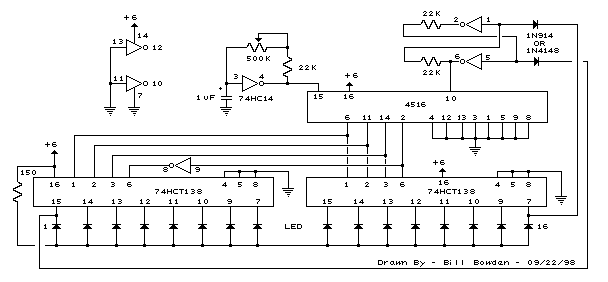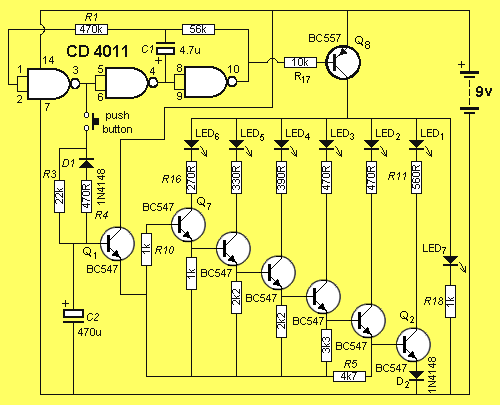
7 Segment LED Counter
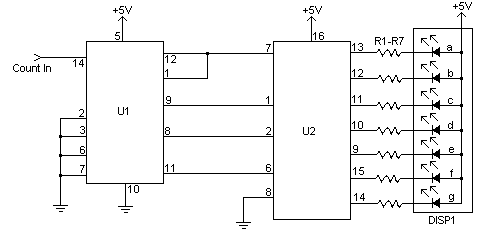
This simple counter can be used to count pulses, as the basis for a customer counter (like you see at the doors of some stores), or for anything else that may be counted. The circuit accepts any TTL compatible logic signal and can be expanded easily (see Notes).
The described counter circuit is designed to count incoming pulses, making it suitable for various applications such as customer counting systems in retail environments. The circuit operates using Transistor-Transistor Logic (TTL), which ensures compatibility with a wide range of digital logic signals.
The core of the circuit typically includes a binary counter IC, such as the 74HC393, which is a dual 4-bit binary counter. This IC can count up to 16 pulses before it resets, making it ideal for tracking the number of customers entering or exiting a store. The inputs of the counter can be connected to a sensor, like a phototransistor or a mechanical switch, that generates a TTL-compatible pulse every time a customer passes through the entrance.
To ensure accurate counting, the circuit may incorporate debouncing mechanisms if mechanical switches are used, preventing false counts due to switch bounce. Additionally, the output of the counter can be connected to a display module, such as a 7-segment display, to visually represent the count. This requires a decoder IC, like the 74HC4511, to convert binary output from the counter into a format suitable for the display.
For expansion purposes, additional counters can be cascaded by connecting the carry-out pin of one counter to the clock input of another, allowing for counting beyond the initial limit of a single IC. This modular approach facilitates scalability, enabling the design to accommodate higher pulse counts as needed.
Power supply requirements for the circuit typically involve a 5V DC source, which is standard for TTL logic circuits. Proper bypass capacitors should be included near the power pins of the ICs to mitigate noise and ensure stable operation.
In summary, this counter circuit is a versatile and expandable solution for counting applications, leveraging TTL logic to provide reliable performance in various environments.This simple counter can be used to count pulses, as the basis for a customer counter (like you see at the doors of some stores), or for anything else that may be counted. The circuit accepts any TTL compatible logic signal, and can be expanded easily (see Notes). 🔗 External reference
The described counter circuit is designed to count incoming pulses, making it suitable for various applications such as customer counting systems in retail environments. The circuit operates using Transistor-Transistor Logic (TTL), which ensures compatibility with a wide range of digital logic signals.
The core of the circuit typically includes a binary counter IC, such as the 74HC393, which is a dual 4-bit binary counter. This IC can count up to 16 pulses before it resets, making it ideal for tracking the number of customers entering or exiting a store. The inputs of the counter can be connected to a sensor, like a phototransistor or a mechanical switch, that generates a TTL-compatible pulse every time a customer passes through the entrance.
To ensure accurate counting, the circuit may incorporate debouncing mechanisms if mechanical switches are used, preventing false counts due to switch bounce. Additionally, the output of the counter can be connected to a display module, such as a 7-segment display, to visually represent the count. This requires a decoder IC, like the 74HC4511, to convert binary output from the counter into a format suitable for the display.
For expansion purposes, additional counters can be cascaded by connecting the carry-out pin of one counter to the clock input of another, allowing for counting beyond the initial limit of a single IC. This modular approach facilitates scalability, enabling the design to accommodate higher pulse counts as needed.
Power supply requirements for the circuit typically involve a 5V DC source, which is standard for TTL logic circuits. Proper bypass capacitors should be included near the power pins of the ICs to mitigate noise and ensure stable operation.
In summary, this counter circuit is a versatile and expandable solution for counting applications, leveraging TTL logic to provide reliable performance in various environments.This simple counter can be used to count pulses, as the basis for a customer counter (like you see at the doors of some stores), or for anything else that may be counted. The circuit accepts any TTL compatible logic signal, and can be expanded easily (see Notes). 🔗 External reference
